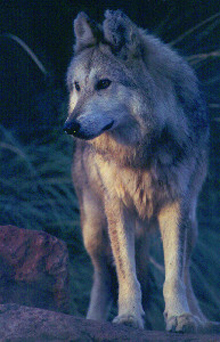25
Apr
Drawing Connections Between Food Webs: Universal Truths About Species’ Roles Uncovered

Ecosystems today face various threats, from climate change to invasive species to encroaching civilization. If we hope to protect these systems and the species that live in them, we must understand them — an extremely difficult and time-consuming task, given the world’s seemingly endless number of ecosystems, each with its own complex dynamics and relationships.
But what if we could pinpoint the most powerful players in a given food web, those “keystone” species without which the entire ecosystem would collapse? And what if we could predict how changes to one ecosystem would affect its various organisms based on data collected from another ecosystem half a world away?
Researchers from Northwestern University, with partners from New Zealand’s University of Canterbury and the Spanish Research Council, say we can. Their research has revealed commonalities about species’ roles in food webs that could hold the key to preservation of ecological communities worldwide.
The paper, “Evolutionary Conservation of Species’ Roles in Food Webs,” was published March 23 in the journal Science.
By studying the roles played by species in 32 ecological communities, the researchers found a species’ role, or importance, in its food web isn’t dependent upon its geographic location or even which species are present. Instead, a species’ importance depends upon the type of species it is and its evolutionary history.
“The gray wolf, for instance, is a keystone species,” said Irmak Sirer, a PhD candidate in the lab of Luis Amaral, professor of chemical and biological engineering at McCormick. “When the wolves disappeared from Yellowstone National Park for 70 years, a broad array of species bottomed out. When they were reintroduced in 1995, willows, songbirds, beavers, and many other species suddenly flourished.”
“Based on our research, we now know that other species with a similar evolutionary history to this wolf hold equally important roles in their own food webs — even if they are on a different continent and look nothing alike,” Sirer added. “And we know they must be protected to avoid further ecological damage.”
…
***
Read the full article here.
Mexican gray wolves are one of the keystone species this article talks about that are so essential to the ecosystems they inhabit, but the wild population needs to be much larger before the wolves can bring these widespread benefits to our southwest wildlands. To learn how you can help, click here.



